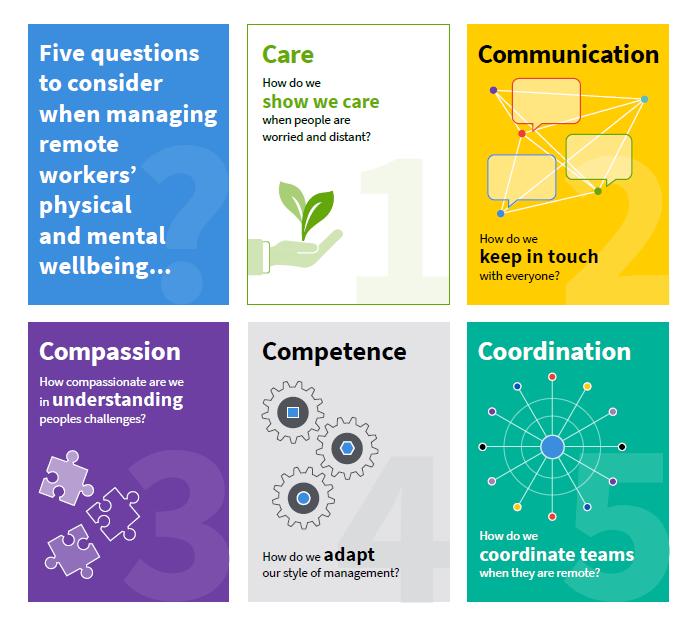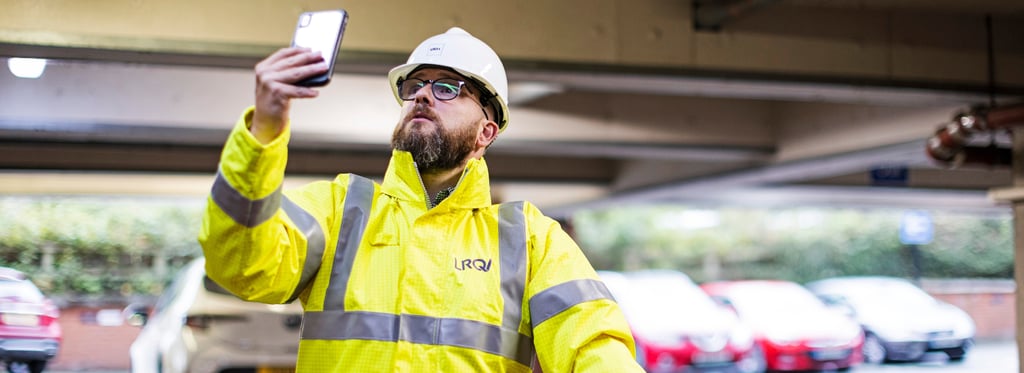As millions of people around the world continue to work from home, our Group Health, Safety, Environment and Security Director James Pomeroy discusses the challenges many have faced to date and what lies ahead as workplaces look to re-open.
For many companies, technology has enabled workforces to quickly move to remote working. For some, there have been difficulties around the capacity of systems for mass use – those companies who had already conducted blackout tests either before the pandemic or right at the beginning, were best prepared. Here at LRQA, our systems performed well because they are cloud-based and we had already made considerable investments in our remote working capabilities.
That’s not to say that it hasn’t been without challenges. From an ergonomic perspective, most people can work for a short period with a laptop, but prolonged use can become a real issue. Most organisations normally only reimburse workers for additional equipment when their employment stipulates that they are permanently or semi-permanently home-based.
Governments offer advice on how to deal with ergonomic issues which can help those temporarily working from home. For example, the UK’s Health and Safety Executive offers guidance on simple steps people can take to reduce the risks from display screen work:
- Break up long spells of work with rest breaks (at least five minutes every hour) or changes in activity
- Avoid awkward, static postures by regularly changing position
- Get up and move or do stretching exercises
- Avoid eye fatigue by changing focus or blinking from time to time
More generally, we are social animals and thrive on interaction. Many of the informalities we take for granted each day are what stimulate us. In addition, innovation and creativity perhaps work best through interaction – remote meetings can help with this of course, but it’s not the same as face-to-face brainstorming with a group of colleagues.
Keeping people healthy
I was fortunate enough to have been taught early on in my safety career by a renowned expert and one of the pioneers of IOSH, John Ridley, who wrote one of the earliest authoritative guides on safety and health in the workplace. The questions he used when considering how to keep people safe both physically and mentally within the workplace, remain with me and are as relevant now as they were then:

What’s next?
While some countries have already seen staff return onsite, others are still in lockdown and considering how to phase employees back into the office.
Whereas invoking remote working across businesses may have been relatively swift and universal, de-escalation is likely to be staggered and phased.
Aside from government advice in each country, the other factors likely to shape the risk are the forms of transportation employees use to reach the office; personal circumstances such as children at home and the ability of companies to facilitate social distancing within the workplace.
Employees who are more vulnerable to the virus, or are living with vulnerable family members, will be advised to continue to isolate, and dependent upon the risk, this will affect their ability to undertake any on-site or office-based roles. Ideally, companies would consider each employee’s circumstances when deciding who should return to the office first. Organisations have a duty of care to all employees.
Travelling for business?
International business travel is likely to remain complicated for an extended period of time. With fears of importing cases, travel restrictions in various forms are likely to remain, ranging from enhanced screening and quarantining through to entry restrictions on citizens from countries where the virus is growing or is perceived to not be controlled.
The availability of flights is also expected to remain limited as airlines struggle to maintain social distancing rules on-board and ensure sufficient passengers to make routes viable.
Some security analysts suggest that COVID-19 is likely to reshape border entry restrictions for health and hygiene in ways that 9/11 altered the precautions for traveller safety. Whether this turns out to be the case, we need to consider how international travel is conducted over the coming months, playing closer attention to pre-trip planning and authorisation, and medical management during travel.
Maintaining vigilance
As the lockdown ends and social interaction resumes, we are likely to see increased clusters of suspected and actual cases. Businesses need to prepare for this, particularly how they plan for on-site work, and respond to reported illness and potential contact.
Considering how and where people interact will be key. This is particularly critical given the virus is expected to remain with us for many months and complacency and fatigue with the precautions will be an increasing challenge.
Approach to risk in the future
The companies that have responded best are those who have taken a wider view of their risks, invested in systems and most importantly, focused on agility and resilience within their safety and risk management approach.
Some management systems such as ISO 45001:2018 require organisations to establish and maintain procedures to identify potential emergency scenarios; respond to accidents and emergencies and prevent and mitigate any environmental impacts and risks that may be associated with accidents and emergencies.
We’ve heard directly from companies who have been certified to the Business Continuity Management standard ISO 22301 that they have felt as prepared as they could have been for any disruption which has put them on the front foot in dealing with the pandemic.
And there are other standards with an element of Organisational Resilience built in which has helped businesses feel confident they have had the right systems and processes in place to help them transition to remote working quickly.
However, somewhat understandably, the emergencies identified historically tend to be incidents that we have experienced before, such as fire, injury / illness, spills and leaks, rescue from confined spaces, adverse weather such as snow, wind, flooding, security incidents and violence and aggression. In essence, the focus has been on incidents that originate within the organisation related to its location, nature of work, machines, chemicals, or neighbouring risks.
Going forward, organisations need to consider other irregular, abnormal incidents which occur outside the workplace as the frequency and intensity of these events is increasing. This will help ensure they are better prepared for dealing with such instances when they next arise.












